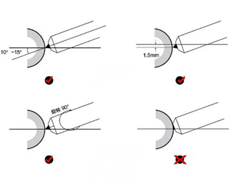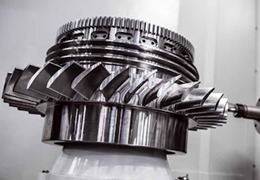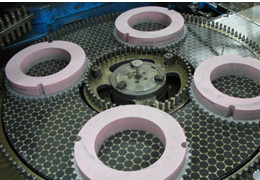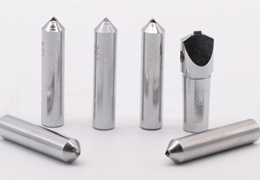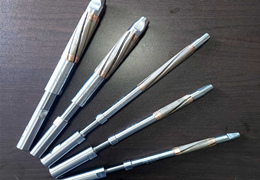The electric vehicle revolution, initiated by pioneers such as Tesla, BYD and various other electric vehicles (EVs), has gained unstoppable momentum. Meanwhile, as consumer demand for EVs continues to rise, OEMs and suppliers will need to move more aggressively toward well-designed production lines.
The overall trend for electric vehicles will be a significant reduction in the number of metal parts, but the demand for higher quality surface finishes and tolerances when machining automotive parts will increase as the complexity of the parts increases. Companies supplying OEMs in the automotive industry will need to diversify their customer base and look to other industries to ensure there is no catastrophic loss of capacity. New energy vehicle power cells, chassis, housings, touch screens, motors, and motors all involve precision machining, and the construction of new energy vehicle production lines has created a large demand for precision machining centers.
 Electric Vehicle Processing Requirements :
Electric Vehicle Processing Requirements :
The driving experience and the market's profit-seeking needs are changing the components that OEMs and their suppliers make and how they make them. We have listed some of the requirements of the electric vehicle industry for machining automotive parts below.
Battery manufacturing :
Battery manufacturing will be a bottleneck in the future of electric vehicle production. Tesla foresees this and plans to mitigate the impact by building battery manufacturing centers called superfactories. Auto companies will need to dip their toes into battery production, as the market is already tight due to limited global adoption of electric vehicles. BYD has also taken on the manufacture of battery packs. Battery production is no easy task, requiring precision machining that can only be achieved with advanced CNC milling machines, lathes and grinders.
 Powertrain Manufacturing:
Powertrain Manufacturing:
The powertrain of an electric vehicle is far less complex than a typical internal combustion engine powertrain. OEMs and their suppliers will be able to transition to manufacturing these drivetrains with minimal changes to their existing machines and processes, albeit in smaller volumes.
Body Panels:
These panels are manufactured by stamping or drawing sheet metal into a mold of the desired shape to create the complex forms of modern passenger cars. The tooling used for this process is machined using 5-axis machines. This process will not change once manufacturing transitions to electric vehicles.
 Higher Quality:
Higher Quality:
Due to the relative simplicity of electric vehicles and the resulting low maintenance requirements, the focus will shift to producing higher quality parts. In order for machined parts to last as long as the electronic components of electric vehicles, they will need to be machined using machinery that can meet the required precision and repeatability.
Lightweighting :
Electric vehicles are very sensitive to excess weight, so parts need to be manufactured from lightweight aerospace materials. Parts will also be designed using optimization techniques such as generative design and topology optimization. Because these algorithms produce complex organic shapes, these complex parts will take more time to manufacture than traditional automotive parts.
Low noise:
Electric vehicles are designed to be quiet. However, if poorly machined parts produce excessive noise, submersion can be interrupted. One of the easiest ways to obtain the surface finish needed to reduce noise is to use a dedicated grinder that can achieve the required tolerances.
Is there a precision machining method that meets all the above requirements?
The answer is yes, and precision grinding is one of the most representative technical routes.
The concept and technical standards of precision grinding
Precision grinding is a form of grinding that focuses on precision. It is used to obtain a high surface quality finish where metal parts have tight tolerances. It is capable of grinding small dimensions, such as depths as small as 0.25 to 0.50 mm, with complete precision. This precision is used in machining areas where the margin of error is very small and where better finishing of the material is required. For example.
Automotive parts (bearing housings and gear contours), medical devices, scientific instruments and aerospace machinery components.
Precision grinding is versatile and capable of handling a wide range of materials and following their specifications to produce quality parts, such as
Stainless steel, aluminum, tool steel, die steel, brass, copper, magnesium, platinum, tantalum and cobalt, as well as ceramics, composites, ferrite, rubber and plastics.
The precision grinding manufacturing process uses specialized rotating grinding wheels consisting of abrasive grains to remove material from the workpiece being machined. A grinding wheel is an expendable wheel used in a variety of grinding and abrasive machining operations. Parts made of ceramic, metal or plastic materials are well suited for this process, which produces an extremely smooth and flat surface by removing very thin layers of material with each pass of the grinding wheel.
The precision grinding machine is built around a motorized spindle equipped with a grinding wheel. Beneath it is a workholding device, usually a magnetic chuck. The chuck holds the workpiece in a stationary position while it is being machined. The abrasive wheel then passes over the surface of the workpiece while lowering closer and closer to the workpiece with each pass. This extremely controlled adjustment of the amount of material cut with each pass allows tight tolerances to be achieved. It can produce very fine finishes and very precise dimensions. However, in a mass production environment, it can also rough out large amounts of metal very quickly.




